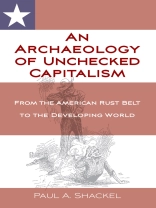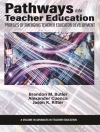The racialization of immigrant labor and the labor strife in the coal and textile communities in northeastern Pennsylvania appears to be an isolated incident in history. Rather this history can serve as a touchstone, connecting the history of the exploited laborers to today’s labor in the global economy. By drawing parallels between the past and present – for example, the coal mines of the nineteenth-century northeastern Pennsylvania and the sweatshops of the twenty-first century in Bangladesh – we can have difficult conversations about the past and advance our commitment to address social justice issues.
Spis treści
List of Illustrations
Preface
Introduction
Chapter 1. The History of Race in the Anthracite Coal Region
Chapter 2. An Archaeology of Immigration, Race, and Poverty in the Anthracite Coal Region
Chapter 3. Historic Trauma: Health and Well-Being in Northeastern Pennsylvania
Chapter 4. Offshoring the Textile Industry and Tragedy
Chapter 5. Offshoring Mining Industries and Tragedy
Conclusion: Difficult Histories are a Reality in the Present
References
O autorze
Paul Shackel is Professor of Anthropology at the University of Maryland. His research projects have focused on the role of archaeology in civic engagement activities related to race and labor. A sample of his work on this topic includes: New Philadelphia: An Archaeology of Race in the Heartland (2011), and a coauthored volume with Barbara Little – Archaeology, Heritage and Civic Engagement: Working toward the Public Good (2014). He recently published Remembering Lattimer: Migration, Labor, and Race in Pennsylvania Anthracite Country (2018) which focuses on labor and migration in northern Appalachia in the United States.











